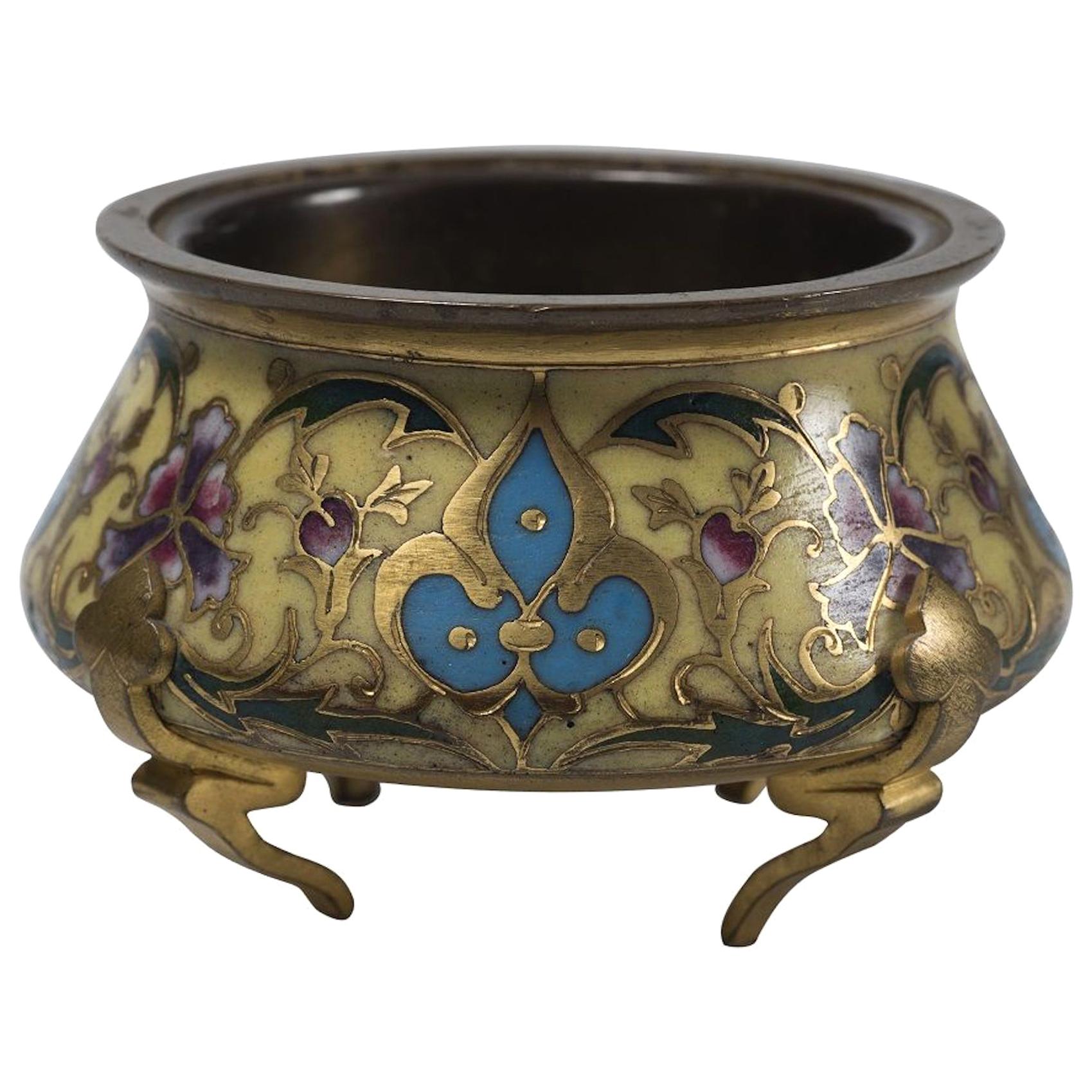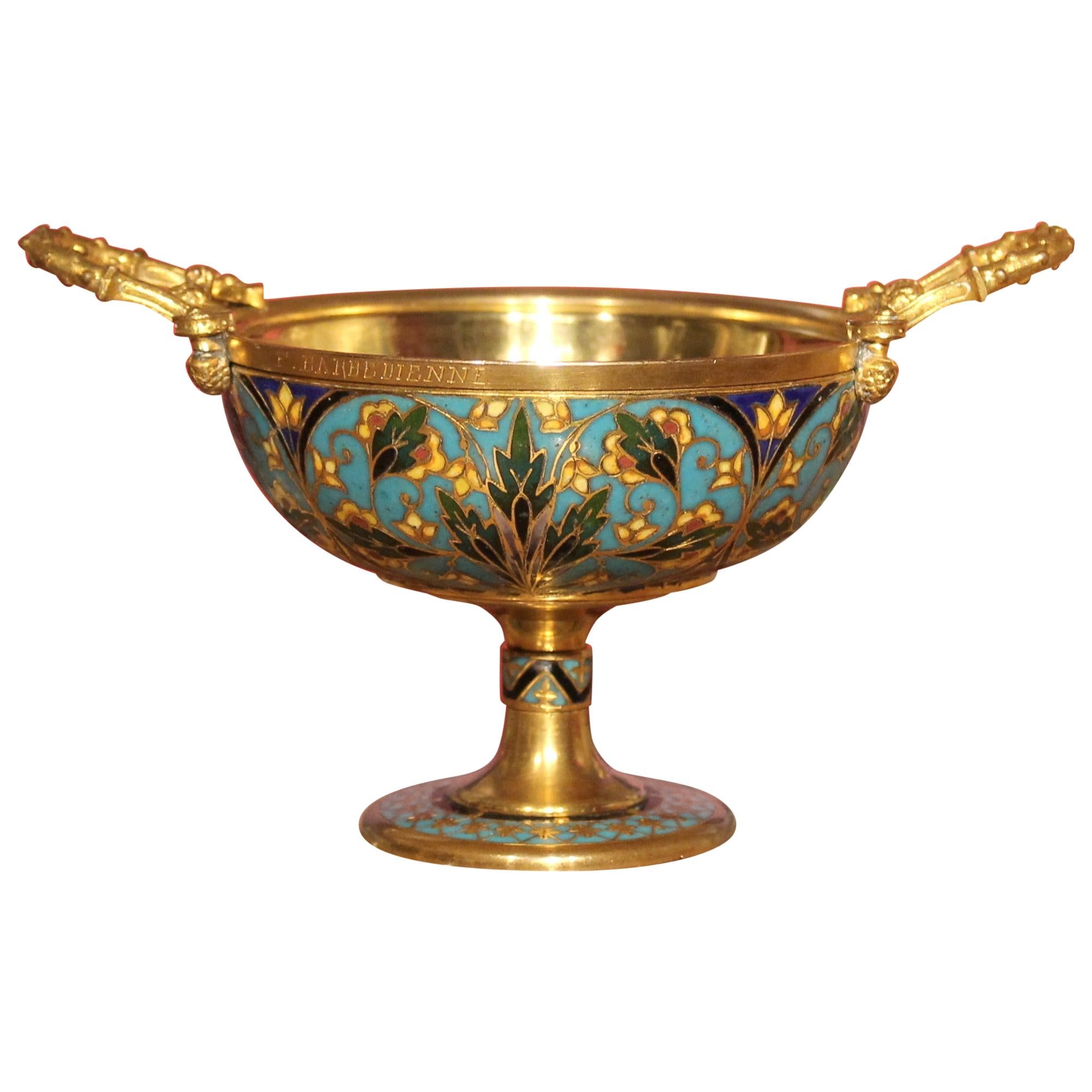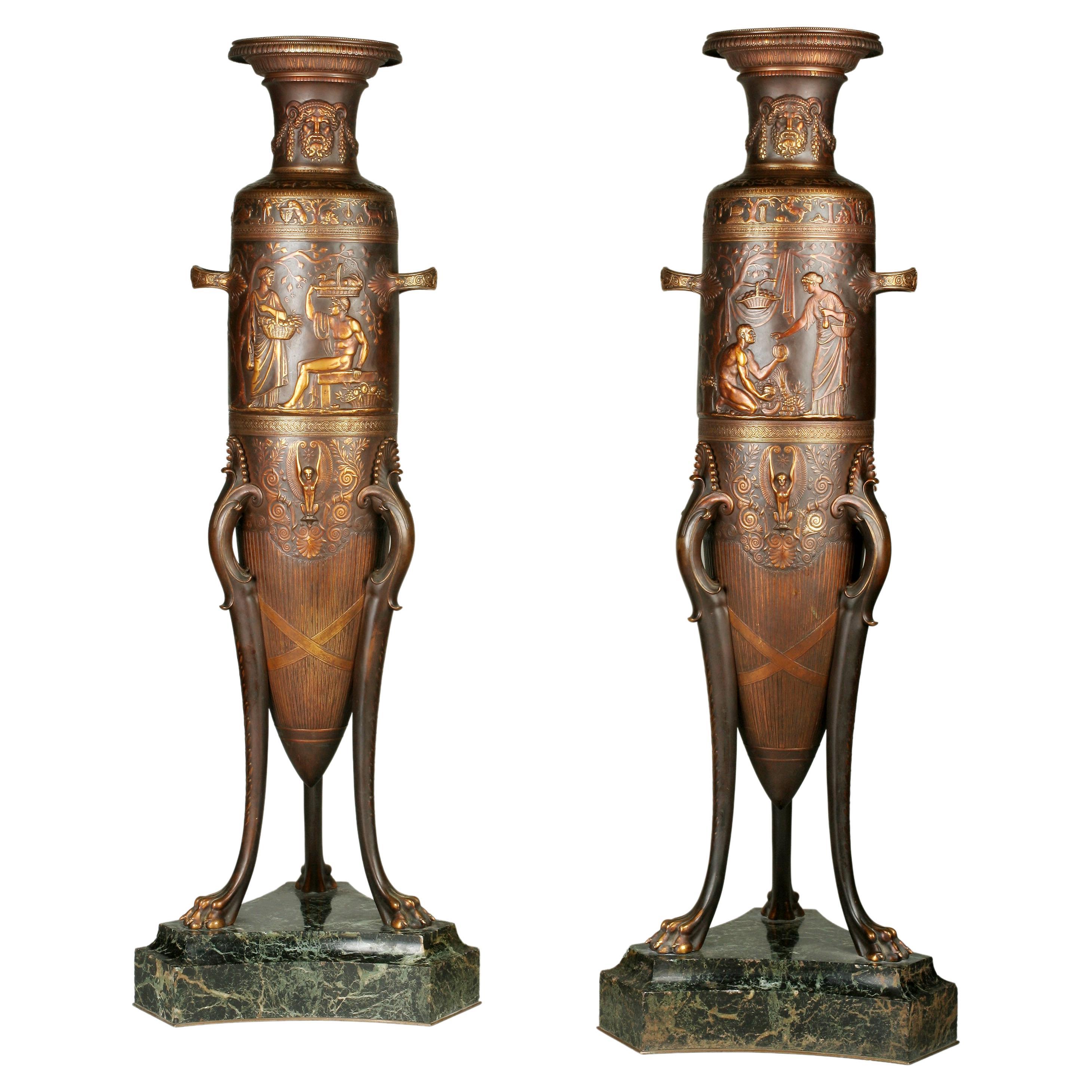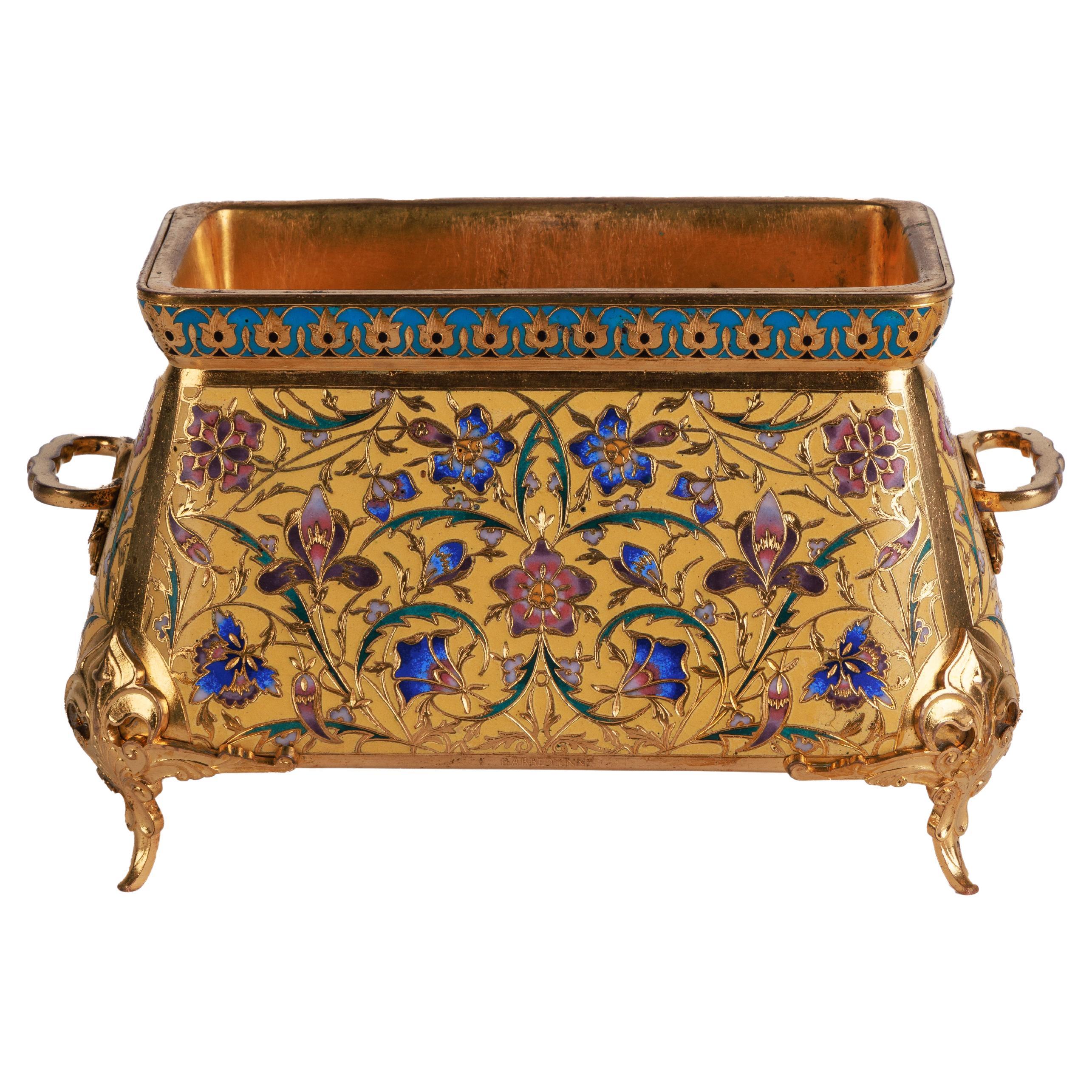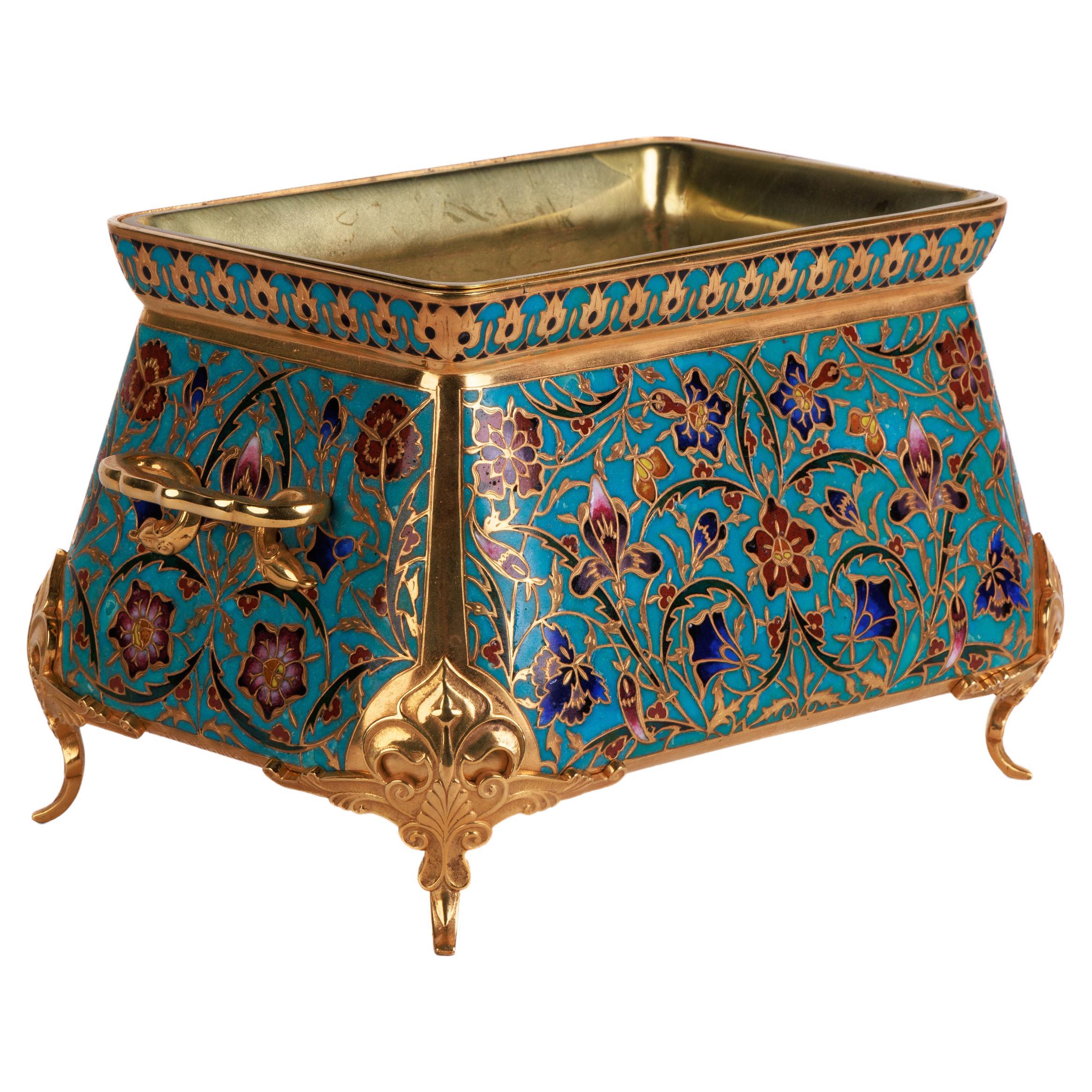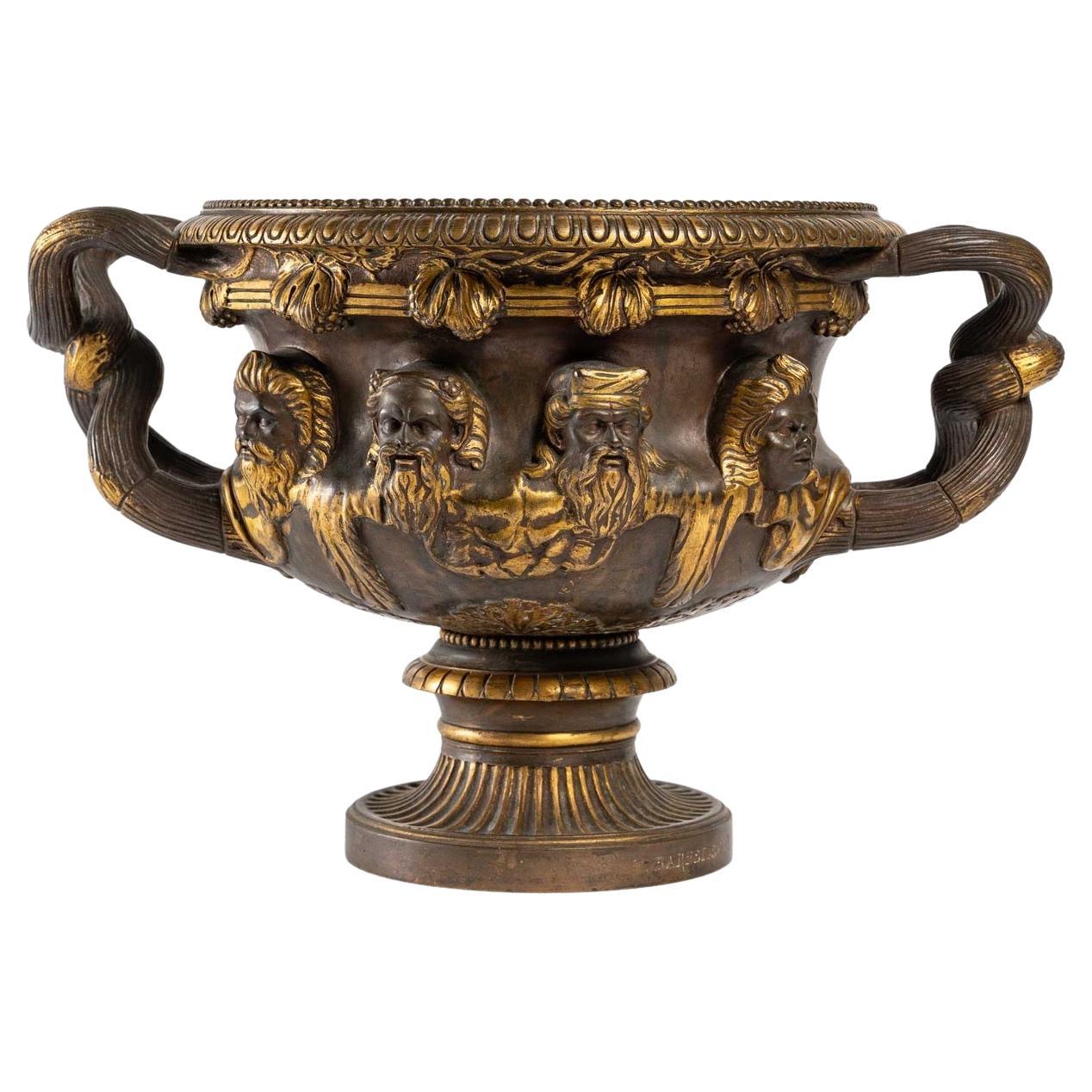Items Similar to Pair of "Alesia" Cups by F. Barbedienne and D. Attarge, France, Circa 1878
Want more images or videos?
Request additional images or videos from the seller
1 of 7
Pair of "Alesia" Cups by F. Barbedienne and D. Attarge, France, Circa 1878
About the Item
Signed Désiré Attarge Fit and F. Barbedienne Paris
Pair of silvered bronze cups, chased by Désiré Attarge after an antique model (Ist Century), known as the Coupe d’Alésia or Canthare d’Alise-Sainte-Reine (now preserved at Antiquités Nationales Museum, Saint-Germain-en-Laye).
The archaeological excavations led in Alise-Sainte-Reine (Côte-d’Or, France) were commissioned from 1861 until 1865 by His Majesty the Emperor Napoléon III in order to find back the place of the Alesia Siege, led by Caesar against Vercingétorix. As soon as 1866, F. Barbedienne was allowed by the emperor to make a replica of that cup for the Dijon Museum, as well as to reproduce it for his own clients (Coignard, "Agapes impériales", L’objet d’art, juin 1987, p. 30-41). Nowadays, some pieces are known, such the one exposed at the Château de Compiègne or another one presented at the famous Orsay Museum.
One of those cups was presented at the 1878 Paris Universal Exhibition on F. Barbedienne’s stand, where his silvered works after antiques were more appreciated than his common other bronze pieces, which were however very successful.
Born in 1810, Ferdinand Barbedienne started at n°30 boulevard Poissonnière in Paris one of the most famous 19th century artistic bronze casting companies. He died in 1892. In addition to his personal production, he worked for famous artists such as Auguste Clésinger, Albert-Ernest Carrier-Belleuse and Louis Barrias. At the London Universal Exhibition of 1851, Barbedienne’s firm won two "Council medals". At the 1855 Universal Exhibition, he won a medal of honour and eleven cooperator’s medals for the work of his co-workers, such as his model designer Louis-Constant Sévin (1821-1888) and his chaser Désiré Attarge (circa 1820-1878). D. Attarge won also the Crozatier Prize in 1862 and 1864, which was awarding the France best chaser, and was once again awarded at the 1867 Universal Exhibition with a Silver medal as Barbedienne’s co-worker. Jury’s report was then very explicit : "It’s impossible to show more taste in composition and more maestria in the making of these leaves and elegant flowers, all chased with so extreme delicacy". The success of Barbedienne’s firm brought him many official commissions, such in circa 1860, as Barbedienne supplied bronzes for furniture for the Pompeian Villa of Prince Napoleon, located avenue Montaigne in Paris. Barbedienne’s production was always highly esteemed and he was, himself admired by contemporary art critics who compared him during the 1878 Universal Exhibition to a "prince of industry and the king of bronze-casting". His glory did not decline with the passage of the time for at the Universal Exhibition of 1889 the critics thanked Barbedienne for the example he set for other bronze-casters by the perfection of his bronzes.
- Creator:Désiré Attarge (Metalworker),Ferdinand Barbedienne (Manufacturer)
- Dimensions:Height: 4.34 in (11 cm)Width: 7.49 in (19 cm)Depth: 4.34 in (11 cm)
- Sold As:Set of 2
- Materials and Techniques:Bronze,Silvered
- Place of Origin:
- Period:
- Date of Manufacture:circa 1878
- Condition:Wear consistent with age and use. Minor fading.
- Seller Location:PARIS, FR
- Reference Number:
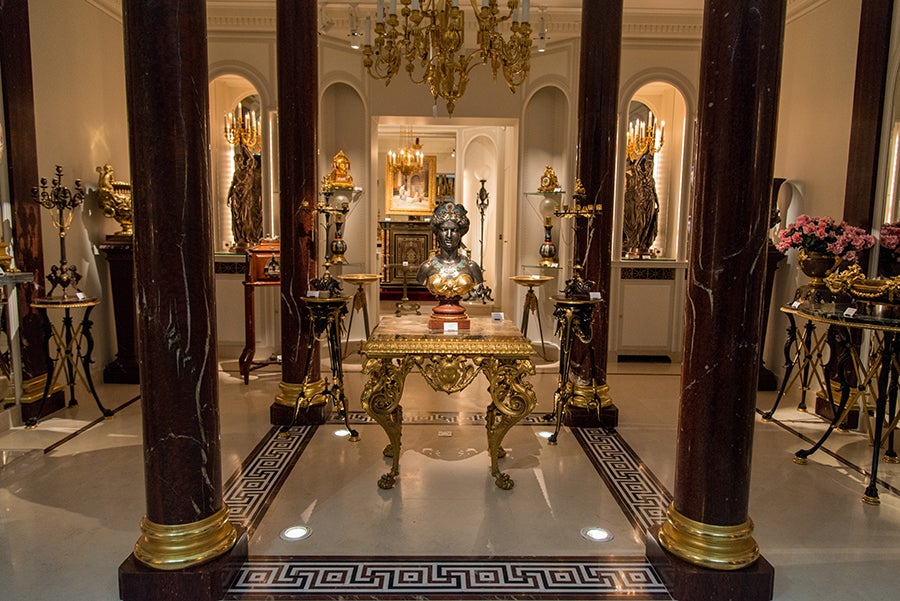
About the Seller
4.9
Vetted Seller
These experienced sellers undergo a comprehensive evaluation by our team of in-house experts.
Established in 1997
1stDibs seller since 2018
73 sales on 1stDibs
Typical response time: <1 hour
Associations
International Confederation of Art and Antique Dealers' Associations
- ShippingRetrieving quote...Ships From: PARIS, France
- Return PolicyA return for this item may be initiated within 7 days of delivery.
More From This SellerView All
- Important Pair of Neo-Greek Vases by Levillain and Barbedienne, France, C. 1878By Ferdinand Levillain, Ferdinand BarbedienneLocated in PARIS, FRThe model of these Etruscan Amphoras has been exposed at the 1878 Paris Universal Exhibition. Each with a waisted neck raised with bearded satyr ma...Category
Antique 1870s French Greek Revival Vases
MaterialsMarble, Bronze
- Pair of Neo-Greek Andirons by F. Barbedienne, France, Circa 1870By Ferdinand BarbedienneLocated in PARIS, FRMeasures: Height : 47 cm (18,5 in.) ; Width : 70 up to 96 cm (27,5 – 37,8 in.) ; Depth : 6 cm (2,3 in.) A rare pair of square shaped andirons, made in gilded bronze and polychrome...Category
Antique 1870s French Greek Revival Fireplace Tools and Chimney Pots
MaterialsBronze, Enamel
- Pair of Neo-Greek Amphora Vases by Barbedienne and Levillain, France, circa 1880By Ferdinand Levillain, Ferdinand BarbedienneLocated in PARIS, FRPair of Greek style vases made two patina bronze. Each, designed in the shape of a tripod amphora adorned with Hercules heads, is decorated in low-relief...Category
Antique 1880s French Greek Revival Vases
MaterialsGriotte Marble, Bronze
- Pair of Small Cloisonné Enamel Vases by F. Barbedienne, France, Circa 1880By Ferdinand BarbedienneLocated in PARIS, FRSigned F. Barbedienne on the mount. Charming pair of small curved-shaped vases in patinated and gilded bronze and polychrome cloisonné enamel decorated with flowers and birds. With ...Category
Antique 1880s French Japonisme Vases
MaterialsBronze, Enamel
- Pair of "Indian Slave" Torcheres by Toussaint & Barbedienne, France, circa 1850By Ferdinand Barbedienne, Achille Collas, François-Christophe-Armand ToussaintLocated in PARIS, FRSigned Ad Toussaint 1850 and F. Barbedienne Fondeur Stamped Achille Collas Réduction Mécanique Torcheres – height : 148 cm (58 1/4 in.) ; width : 34 cm (13 1/3 in.) Pedestals – ...Category
Antique 1850s French Napoleon III More Lighting
MaterialsCrystal, Bronze
- Pair of Neo-Greek Bronze Floor Lamps by F. Barbedienne, France, circa 1860By Ferdinand BarbedienneLocated in PARIS, FRHeight without/with lampshade : 168/185 cm (66,1 / 72,8 in.) ; Base : 43 x 43 cm (16,9 x 16,9 in.) Beautiful pair of neo-Greek floor lamps in bronze with double patina, composed of cylindrical lamps, decorated on the body with a rotating frieze representing women dressed in the Antique style weaving and spinning, surmounted by lampshades with cut sides in red pleated silk with golden braid. They are placed on pedestals from which hang thin chains attached to the slender shaft decorated with stylized leaves and flowers, resting on a tripod base decorated with large palmettes and ending in lion’s paws. The stylistic repertoire used here, composed in particular of palmettes, masks, and nymphs, evokes Greek Antiquity, as does the reuse of forms of furniture and objects such as tripods and antique vases. The rediscovery in the 18th century of the archaeological remains of Pompeii and Herculaneum allowed artists of all disciplines to draw inspiration from Antiquity while reinterpreting it. This trend did not fade and, in the 19th century, many personalities fitted out their interiors with neo-Greek furniture, as was the case for the Maison Pompéienne built in 1856 by the architect Alfred Normand (1822-1909) for Prince Napoleon, or Empress Eugénie who bought from the Maison Barbedienne pedestals inspired by antique tripods. Related work : Pedestal model presented by Maison Barbedienne at the Universal Exhibition in Paris in 1855. On this occasion, Empress Eugénie bought it for her bathroom in the Château de Saint-Cloud. This model pleased the Empress so much that she ordered two other pairs in 1858 for her boudoir in the palaces of Compiègne and Fontainebleau. (see photo attached) Photo showing a floor lamp similar to ours in Empress Eugénie’s bedroom in the Château de Compiègne (Oise), in Architecture intérieure et Décoration en France des...Category
Antique 1860s French Greek Revival Floor Lamps
MaterialsBronze
You May Also Like
- Ancient Little Bronze Cup by Ferdinand Barbedienne, 19th Century, FranceBy Ferdinand BarbedienneLocated in Roma, ITThis little bronze cup is an original decorative object realized by Ferdinand Barbedienne in France during the 19th century. Signed by the artist. Good conditions. This refined...Category
Antique 19th Century French Decorative Bowls
MaterialsBronze
- F. Barbedienne, 19th Century French Gilt Bronze and Cloisonnè Enamel Tazza CupBy Ferdinand BarbedienneLocated in Firenze, ITThis French 19th Century antique lovely bronze and cloisonnè enamel tazza or cup with handles is an artwork made by Ferdinand Barbedienne (1810–1892). This Napoleon III period little...Category
Antique 19th Century French Napoleon III Decorative Bowls
MaterialsBronze, Enamel
- Ferdinand Barbedienne, a French Ormolu and Champleve Enamel Jardiniere, C. 1870By Ferdinand Barbedienne, Louis-Constant SevinLocated in New York, NYFerdinand Barbedienne, A French Ormolu and Champleve Enamel Jardiniere, C. 1870, The Design Attributed to Louis Constant Sevin. An exceptional qualit...Category
Antique 19th Century French Napoleon III Decorative Bowls
MaterialsBronze, Enamel, Ormolu
- Ferdinand Barbedienne, A French Ormolu and Champleve Enamel Jardiniere, C. 1870By Ferdinand Barbedienne, Louis-Constant SevinLocated in New York, NYFerdinand Barbedienne, A French Ormolu and Champleve Enamel Jardiniere, C. 1870, The Design Attributed to Louis Constant Sevin. An exceptional qualit...Category
Antique 19th Century French Napoleon III Planters, Cachepots and Jardini...
MaterialsBronze, Enamel, Ormolu
- Bronze Cup by Barbedienne, Napoleon III PeriodBy F. Barbedienne FoundryLocated in Saint-Ouen, FRBronze cup by Barbedienne, Napoleon III period, 19th century. Measures: H: 21 cm, W: 33 cm, D: 20 cm, D: 12 cm.Category
Antique 1870s French Napoleon III Decorative Bowls
MaterialsBronze
- Neo-Grec Gilt and Patinated Bronze Tazza, Cast by BarbedienneBy Ferdinand Levillain, Ferdinand BarbedienneLocated in Brighton, West SussexA Neo-Grec gilt and patinated bronze Tazza, designed by Ferdinand Levillain and cast by Ferdinand Barbedienne. Marked 'F. Levillain' to the decoration and stamped 'F. Barbedienne' to the underside. This rare tazza is a fine example of the collaboration between the gifted designer Ferdinand Levillain and the highly acclaimed bronzier Ferdinand Barbedienne. It is decorated with a bas-relief in the 'Neo-Grec' or ‘Pompeian’ style with classical figures herding animals...Category
Antique 19th Century French Neoclassical Revival Decorative Dishes and V...
MaterialsBronze
